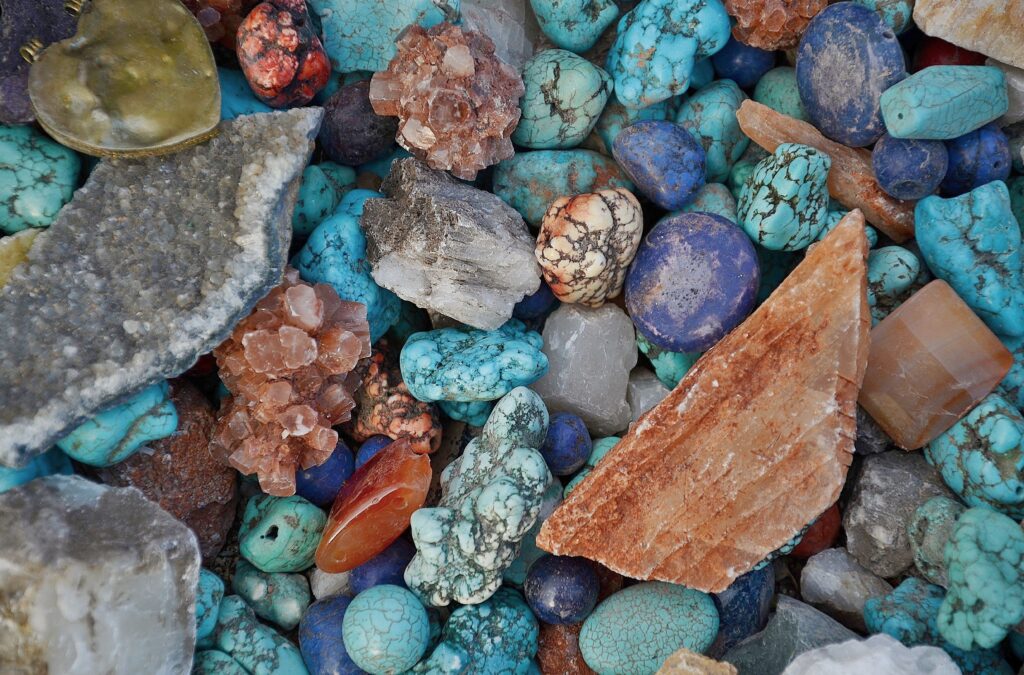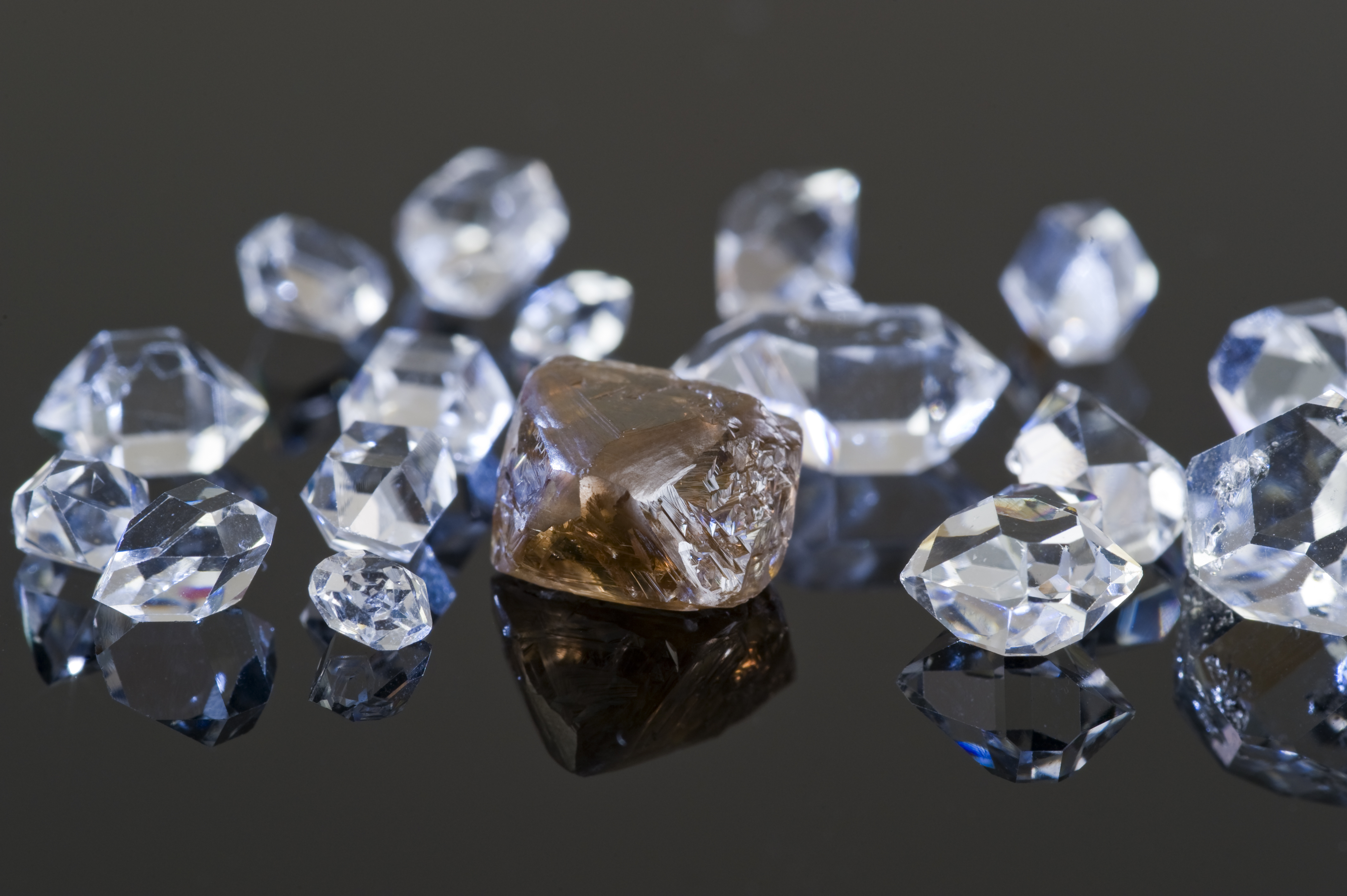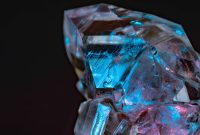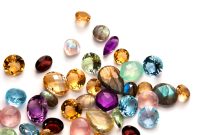The Mineral
Diamond is an allotrope of carbon. It is the hardest known natural material and the third-hardest known material after aggregated diamond nanorods and ultrahard fullerite. Its hardness and high dispersion of light make it useful for industrial applications and jewellery.
Diamonds are specifically renowned as a material with superlative physical qualities; they make excellent abrasives because they can be scratched only by other diamonds, Borazon, ultrahard fullerite, or aggregated diamond nanorods, which also means they hold a polish extremely well and retain their lustre. Approximately 130 million carats (26,000 kg) are mined annually, with a total value of nearly USD $9 billion, and about 100,000 kg (220,000 lb) are synthesized annually.
The name diamond derives from the ancient Greek adamas (“invincible”). They have been treasured as gemstones since their use as religious icons in ancient India and usage in engraving tools also dates to early human history. Popularity of diamonds has risen since the 19th century because of increased supply, improved cutting and polishing techniques, growth in the world economy, and innovative and successful advertising campaigns. They are commonly judged by the “four Cs”: carat, clarity, colour, and cut.
Roughly 49% of diamonds originate from central and southern Africa, although significant sources of the mineral have been discovered in Canada, India, Russia, Brazil, and Australia. They are mined from kimberlite and lamproite volcanic pipes, which brought to the surface the diamond crystals from deep in the Earth where the high pressure and temperature enables the formation of the crystals. The mining and distribution of natural diamonds are subjects of frequent controversy such as with concerns over the sale of conflict diamonds (blood diamonds) by African paramilitary groups.

Material properties
A diamond is a transparent crystal of tetrahedrally bonded carbon atoms and crystallizes into the face centered cubic diamond lattice structure. Diamonds have been adapted for many uses because of the material’s exceptional physical characteristics. Most notable are its extreme hardness, its high dispersion index, and extremely high thermal conductivity (900 – 2320 W/m K), with a melting point of 3820 K (3547 °C / 6420 °F) and a boiling point of 5100 K (4827 °C / 8720 °F).
Naturally occurring diamonds have a density ranging from 3.15 to 3.53 g/cm³, with very pure diamond typically extremely close to 3.52 g/cm³.
Hardness
Diamond is the hardest natural material known to man; hardness is defined as resistance to scratching. Diamond has a hardness of 10 on Mohs scale of mineral hardness. Diamond’s hardness has been known since antiquity, and is the source of its name.
The hardest diamonds in the world are from the New England area in New South Wales, Australia. These diamonds are generally small, perfect to semiperfect octahedra, and are used to polish other diamonds. Their hardness is considered to be a product of the crystal growth form, which is single stage growth crystal. Most other diamonds show more evidence of multiple growth stages, which produce inclusions, flaws, and defect planes in the crystal lattice, all of which affect their hardness.

The hardness of diamonds contributes to its suitability as a gemstone. Because it can only be scratched by other diamonds, it maintains its polish extremely well. Unlike many other gems, it is well-suited to daily wear because of its resistance to scratching—perhaps contributing to its popularity as the preferred gem in an engagement ring or wedding ring, which are often worn every day.
Industrial use of diamonds has historically been associated with their hardness; this property makes diamond the ideal material for cutting and grinding tools. As the hardest known naturally-occurring material, diamond can be used to polish, cut, or wear away any material, including other diamonds. However, diamond is a poor choice for machining ferrous alloys at high speeds. Common industrial adaptations of this ability include diamond-tipped drill bits and saws, or use of diamond powder as an abrasive. Industrial-grade diamonds are either unsuitable for use as gems or synthetically produced, which lowers their value and makes their use economically feasible
Colour
Diamonds can occur in nearly any colour, though yellow and brown are by far the most common. “Black” diamonds are not truly black, but rather contain numerous dark inclusions that give the gems their dark appearance. Coloured diamonds contain impurities or structural defects that cause the coloration, while pure or nearly pure diamonds are transparent and colourless. Most diamond impurities replace a carbon atom in the crystal lattice, known as a carbon flaw. The most common impurity, nitrogen, causes a slight to intense yellow coloration depending upon the type and concentration of nitrogen present. agi classifies low saturation yellow and brown diamonds as diamonds in the normal colour range, and applies a grading scale from ‘D’ (colourless) to ‘Z’ (light yellow). A blue diamond recently fetched nearly $8 million. The blue hue was a result of trace amounts of boron in the stone’s crystal structure.
Identification
Diamonds can be identified via their high thermal conductivity. Their high refractive index is also indicative, but other materials have similar refractivity. Diamonds do cut glass, but other materials above glass on Mohs scale such as quartz do also. Diamonds easily scratch other diamonds, but this damages both diamonds.




